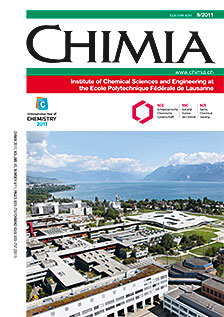Photonic and Optoelectronic Devices Based on Mesoscopic Thin Films
DOI:
https://doi.org/10.2533/chimia.2011.738Keywords:
Dye-sensitized solar cells, Organic light emitting diodes, Photochemical water splittingAbstract
Dye-sensitized solar cells (DSCs) are one of the most promising environmental friendly and low material costs photovoltaic devices. DSCs accomplish the separation of the optical absorption and charge separation processes by the association of a sensitizer as light absorbing material with a wide band gap semiconductor. The mesoscopic morphology of the semiconductor produces an interface with a huge area endowing these systems with intriguing optoelectronic properties. In recent years the DSC has made excellent progress. Conversion efficiencies over 12% and excellent stability have been reached rendering it a credible alternative to conventional p-n junction photovoltaic devices. Commercial exploitation of DSCs started in 2009. In addition to the DSC, Laboratory of Photonics and Interfaces performs research in the field of photoelectrochemical water splitting and materials design for organic light emitting diodes.Downloads
Published
2011-09-30
Issue
Section
Scientific Articles
License
Copyright (c) 2011 Swiss Chemical Society

This work is licensed under a Creative Commons Attribution-NonCommercial 4.0 International License.
How to Cite
[1]
K. Kalyanasundaram, S. M. Zakeeruddin, M. Grätzel, Chimia 2011, 65, 738, DOI: 10.2533/chimia.2011.738.







